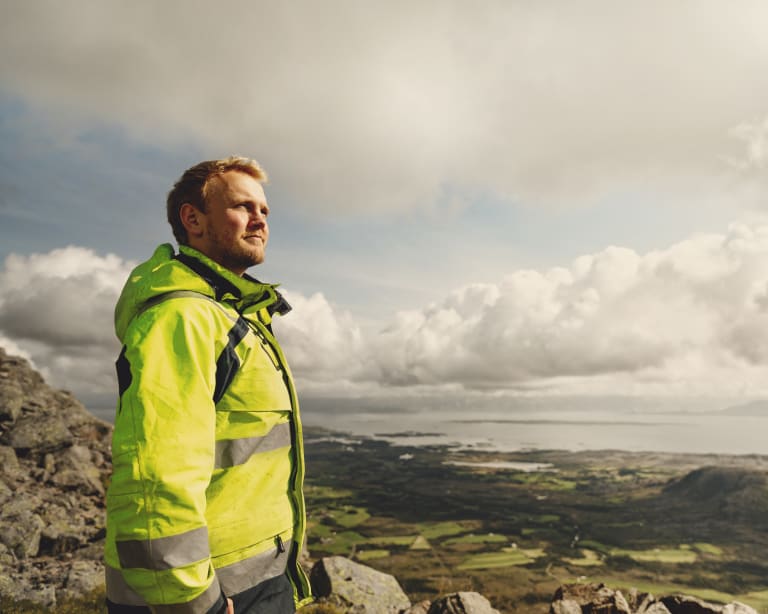The conditions are tough, and they are replacing heavy equipment in a very small space. Time is also of the essence and the client wants regular updates to ensure they are on schedule.
At least this time the weather is good, and they are not bothered by curious onlookers or well-meaning people who want to help, as is the case when they work in cities.
The call is to inform the customer they are about to cut the transmission for the old equipment. As soon as the team leader hangs up, everyone gets to work.
The team is part of a pilot project to install 5G transmitters on masts, towers or rooftops. Once the pilot project and the tests have been completed, there will be 15,000 sites all over Norway that will need new equipment.
A lot of planning goes into the 5G installations and today’s work actually started more than a week ago. To ensure a smooth transition, a technical engineer studied the documentation and the site to figure out how to perform the work and what equipment was needed.
The team knows exactly what to do. After almost eight hours the team leader makes a new call, telling the customer they can start to test run and integrate the new equipment.
In the meantime, the people of Trondheim do not notice much. Maybe a downloading session went a little slower than usual or they had one bar less on their cell phone connection for a few hours. But when the mission is done, the people of Trondheim will be connected to a network that will allow a future with an Internet of Things and self-driving cars.



